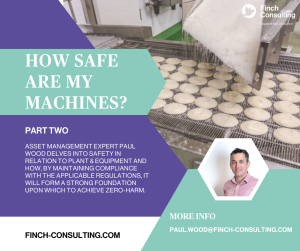Despite their best efforts every company will suffer equipment failures at some point. Whether you operate aircraft, run a nuclear power station, race Formula 1 cars, or bake bread, everyone wants to avoid failures however, the frequency and impact will vary drastically dependent on how prepared the company is and the industry they are in.
Posted
28.02.2024
Written by
At a basic level, there are two sides to any failure, the preventative actions trying to avoid or minimise the event happening in the first place and the reactive actions trying to aid the recovery and minimise the resulting impact i.e. downtime, reduced quality, environmental impact etc.
The main preventive action will be based around maintenance inspections but can be further refined and informed by things like Failure Mode Effect Criticality Analysis (FMECA) or Reliability Centred Maintenance (RCM) studies aimed at identifying what might fail and how to prevent or mitigate it. Refining O&M manual maintenance recommendations to reflect the findings of Root Cause Analysis (RCA) is also a good way of completing a Plan, Do, Check, Act (PDCA) cycle in an attempt to stop the failure reoccurring and improve the overall reliability.
The most common approach to minimising the impact of failure is to hold a replacement part on stock. Having a reliable stock management system can be a real layer of security for a business, if the right data has been provided and used to procure the spare part and efficient stock management is employed to ensure the part is available as and when required then it can drastically reduce the downtime. For some components, the part might be held off site at a supplier where environmental conditions are better suited for long term storage. Alternatively, the part might be readily available and obtainable from numerous suppliers within a couple of hours which would make more financial sense not holding stock on the shelf.




